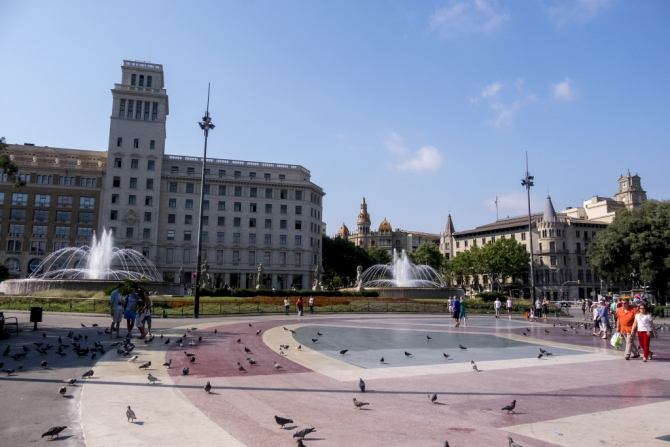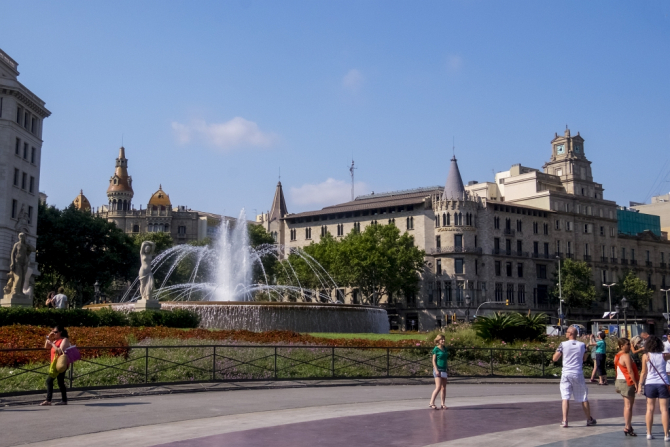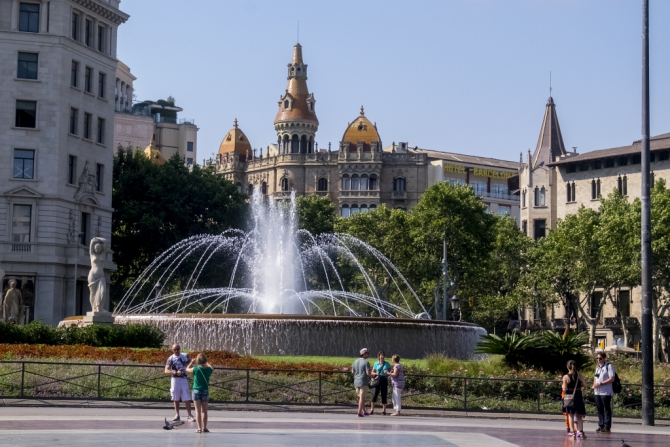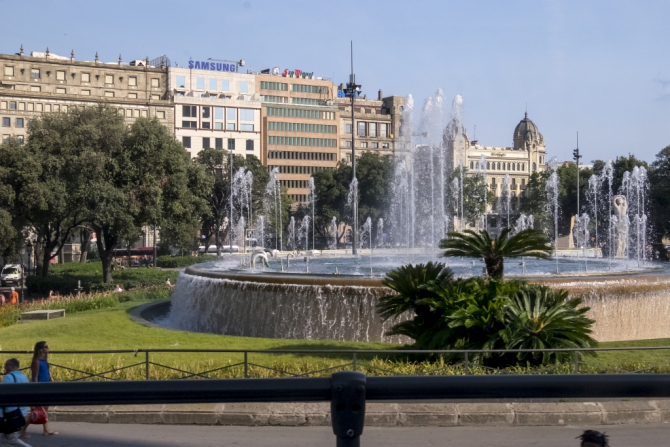Catalunya Square
Updated: 12/12/2019
Plaça Catalunya
08002
Barcelona
Barcelona
Contact
Cultural productions:
Barcelona Film Commission
(+34) 93 454 80 66
filmcommission@bcn.cat
(You can also manage the permit by filling the forms in this website)
Commercial productions:
Oficina d'Informació i Tràmits - Guàrdia Urbana
(+34) 93 291 50 30
gu_oit_filmacions@bcn.cat
Plaça de Catalunya is considered the centre of Barcelona and is where the old centre meets the new. It is the starting point for Passeig de Gràcia, Rambla de Catalunya, La Rambla and Portal de l'Àngel, streets always crowded with residents and visitors. There are shops, cafés, bars and banks in the square, which is also a centre of urban transport.
The square's large central space holds one-off concerts, public celebrations and a variety of activities. The square is notable for its sculptures, which were created by important artists, such as Josep Clarà's Goddess; the Francesc Macià monument by Josep Maria Subirachs; Pau Gargallo'sShepherds, and other works by Josep Llimona and Enrique Casanovas.
The origin of Plaça de Catalunya was the 1859 Pla Rovira, although the city council did not get permission to build it until the end of 1889, after Pere Falqués won the competition for its construction, at the Universal Exhibition of 1888. The foundations, considered of great urban value, extended to the shopping galleries on Avinguda de la Llum, today the basement of the El Triangle shopping centre. Until the Spanish Civil War (1936-1939), its cafés and restaurants (Maison Dorée, Colón, Lluna, Suís) were centres of literary and political discussion. It was also an area of theatres such as the Bon Retir (1876-1885), Circ Eqüestre Alegria (1879-1895), Eldorado Concert (1887) and Teatre Barcelona (1923).










